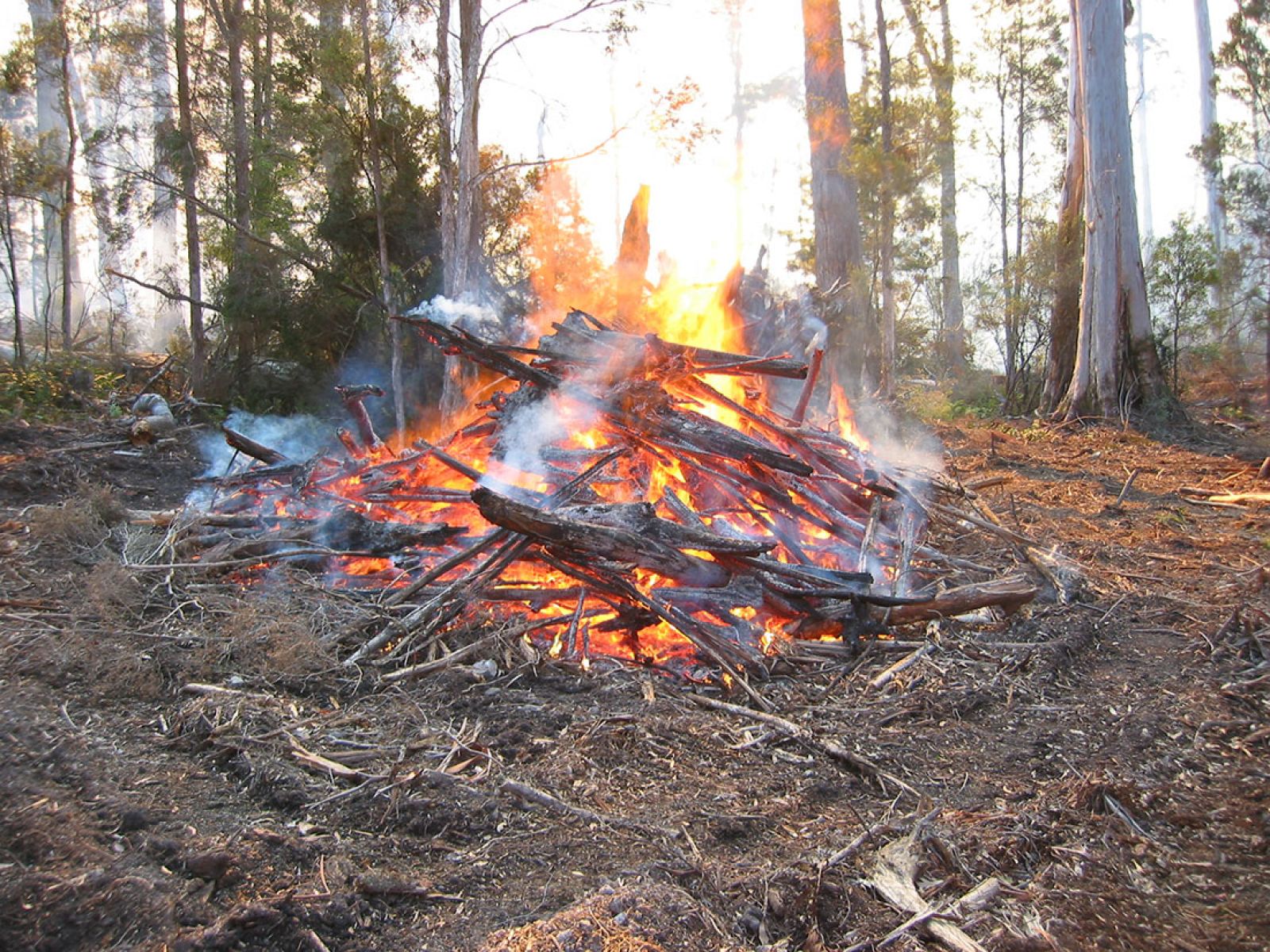Burning off on your property
Note: Making a complaint about smoke management from planned burns
All complaints relating to smoke should be lodged with the Environment Protection Authority (EPA) (telephone 1800 005 171)
Planned burns
You may need to burn off on your property for a number of reasons:
- Fuel management burns are to reduce the level or distribution of fuels in forests and grasslands so that any wildfires within treated areas are less intense and more likely to be brought under control without threat to property and lives.
- Residue burns are to remove residue from agricultural operations.
- Regeneration burns are to reduce residue following harvesting operations and prepare seedbeds for the regeneration of forests.
- Ecological management burns are to maintain natural vegetation patterns and habitats.
Permits
If you want to burn off during the fire permit period you must get a permit from the Tasmanian Fire Service.
Hazard reduction burns and agricultural residue burns outside the permit period are not regulated by the forest practices system, but burns that are part of a forest harvesting or regeneration operation are subject to the Forest Practices Act 1985 and Forest Practices Code. Large planned burns by the forest industry are often carried out through the Coordinated Smoke Management System.
Coordinated Smoke Management System
Tasmania's Coordinated Smoke Management System is a smoke management tool for planned burns co-ordinated by the Forest Practices Authority (FPA).
Vegetation burns conducted as part of forest harvesting or regeneration operations are subject to prescriptions in certified forest practices plans. Alleged breaches of forest practices plans are investigated by the FPA. Alleged breaches of air quality standards are investigated by EPA.
The Coordinated Smoke Management System (CSMS), designed to reduce smoke pollution levels near populated areas, is a voluntary system currently used by the forest industry, Tasmania Fire Service (TFS) and Parks and Wildlife Service (PWS).
The FPA developed the CSMS in consultation with the EPA, the forest industry, the Department of Health and Human Services, TFS and PWS. The CSMS:
- is managed through a special website run by the FPA where daily planned burn information is lodged and up-to-date information on the operational parameters of the CSMS is held
- coordinates planned burns in relation to weather forecasts to minimise the risk of high concentrations of smoke within each of 11 regional 'air sheds' in Tasmania
- provides feedback from a network of smoke monitoring stations.
The CSMS has significantly reduced the levels of smoke pollution near populated centres since Smoke management guidelines (PDF 442.8 KB) were introduced on a trial basis in 2008. The guidelines include planning for smoke dispersal using data and models developed by the Bureau of Meteorology that aim to reduce the risk of smoke pollution near populated centres. Planned burns on any one day are centrally co-ordinated through an on-line CSMS computer system managed by the FPA using weather forecast data supplied by the Bureau of Meteorology through the EPA.The system takes into account individual burn locations, fuel loads, forecasted local weather conditions, and existing smoke. If poor smoke dispersal is forecast, burns may be limited or will not go ahead.
Under suitable conditions much of the smoke from high intensity forestry burns is carried away from populated centres through the convection columns created and upper atmospheric dispersal. Under unfavourable conditions, and when high-intensity burns enter a smouldering phase near the end of the burn, smoke may accumulate at ground level, which the system plans to avoid. Fuel reduction burns tend to be of low intensity and result in smoke concentrations or dispersal closer to ground level, which can cause local nuisance.
The EPA and FPA review the guidelines and the co-ordination system applied to burns and seek to make improvements to the guidelines in consultation with the major burn operators every year. Improvements to the guidelines are specified on the special CSMS website used by burners. The system is designed to enable important hazard reduction programs. Continuing refinements to the CSMS will reduce, but not entirely eliminate, the risk of smoke from planned vegetation burn-offs affecting populated areas.
More information
Leaflet on Planned burns and smoke management (PDF 212.1 KB)
The What’s Burning Now website managed by the Tasmania Fire Service provides information on proposed, active and completed burns, and has links to the websites of various entities undertaking burns.
